AI Robots Learn Soccer: Simulation to Reality Transfer
The world of artificial intelligence and robotics is constantly advancing, and one particularly intriguing development is the creation of AI agents trained to play soccer. These AI-driven robots learn the game through simulations and then apply their skills in real-world scenarios, facing unique challenges and achieving notable successes. This exploration into AI soccer robots showcases how these technologies are pushing the limits of what AI and robotics can achieve, setting the stage for future breakthroughs.
Key Points
- AI agents learn to play soccer in simulated environments.
- Simulations can be accelerated, speeding up the learning process.
- Transferring skills from simulation to real-world scenarios is challenging.
- Robots are trained to prevent collisions and knee injuries.
- They develop skills like walking, turning, and kicking.
- AI-learned behaviors can outperform traditional handcrafted methods.
- Various AI techniques are used for different movements, such as walking, rising, and kicking.
- Lambda offers cost-effective cloud GPUs for AI applications.
The Evolution of AI Soccer Players
From Simulation to Reality: An AI Soccer Revolution
The journey of AI agents learning soccer begins in simulated environments. Initially, these agents are like beginners on the field, struggling to coordinate their movements and interact with the ball. Through extensive training, however, they gradually develop the necessary skills to become competent players. This process often involves reinforcement learning, where agents receive rewards for successful actions and penalties for failures. The goal is to develop AI capable of controlling robotic bodies to meet specific objectives in a dynamic, competitive environment. One major advantage of using simulations is the ability to speed up time.

With powerful computers, AI agents can experience years of simulated gameplay in a fraction of real-world time. This accelerated learning enables them to quickly refine their strategies and develop sophisticated skills that would take much longer to acquire through real-world practice alone. However, the real challenge lies in transferring these skills from simulation to reality. The real world introduces complexities and uncertainties not fully captured in simulation, such as imperfect sensors, motor limitations, and unpredictable environmental conditions. This requires the use of domain randomization during training to improve the transfer to real-world scenarios.
Challenges in Training AI Soccer Robots
Creating AI soccer robots comes with its own set of challenges. One major concern is the potential for damage during gameplay. In the early stages, without proper programming, robots might engage in behaviors leading to collisions and mechanical failures, particularly knee injuries.
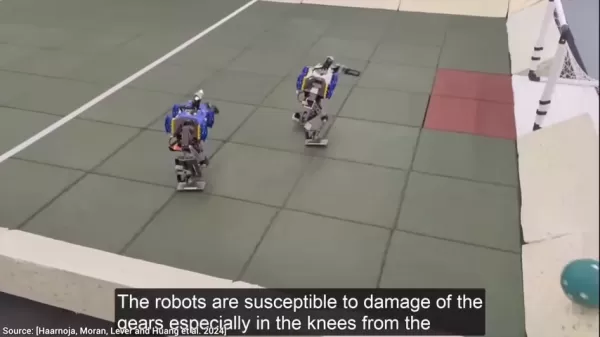
To mitigate these risks, researchers implement strategies like collision avoidance mechanisms and motion restrictions. The complexity of controlling robots with multiple degrees of freedom adds another layer of difficulty, as each joint represents a potential point of failure, requiring precise coordination for smooth and efficient movements. Additionally, the transition from simulation to reality necessitates careful consideration of the differences between these environments.
Balancing Aggression and Safety in AI Soccer
In the competitive world of soccer, aggression is valued, but when it comes to physical robots, striking a balance between aggressive play and safety is crucial.
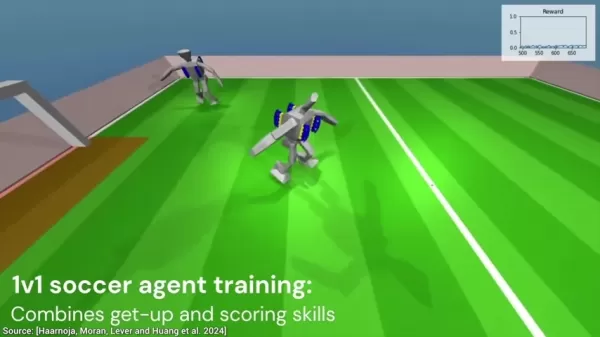
In initial simulations, AI agents may learn overly aggressive tactics, potentially leading to collisions and damage. To address this, researchers impose penalties for such behavior, encouraging the development of more strategic and controlled approaches. By penalizing high impacts, the game becomes safer, helping robots avoid knee injuries and damage to internal mechanisms. This strategic training reinforces positive behaviors and promotes safe gameplay.
Beyond the Game: The Broader Impact of AI Soccer Research
While AI soccer robots might seem like a niche area, their development has broader implications for AI and robotics.
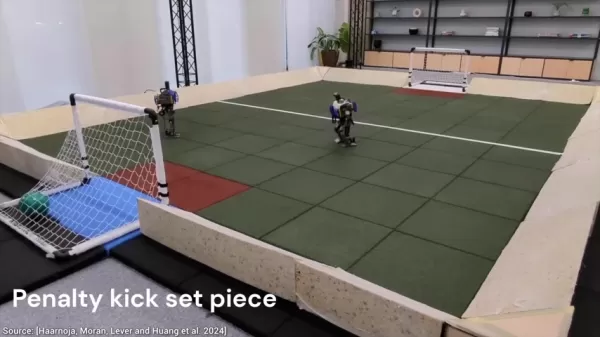
The challenges faced in creating these robots, such as learning complex motor skills and transferring them to the real world, are relevant to many other applications. Techniques developed for AI soccer robots could enhance the performance of robots in manufacturing, logistics, or healthcare. Additionally, studying these AI agents' strategies and techniques can provide valuable insights into human learning and complex task performance, advancing our understanding of motor control and decision-making. Essentially, AI soccer research is about pushing forward the field of AI and robotics, paving the way for more effective human-machine collaboration.
Key Components and Features of the AI Soccer System
Training Regimen for Optimal Performance
To train AI soccer robots effectively, a structured approach is essential.
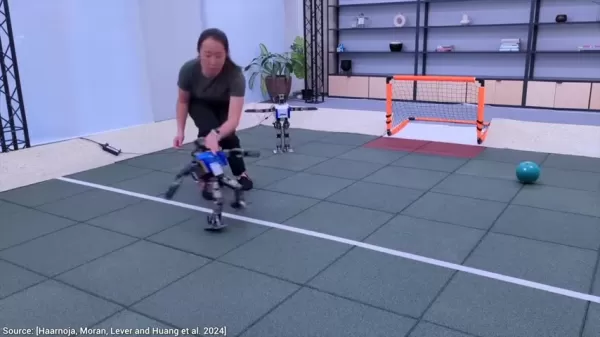
The training regimen typically involves several stages, starting with basic motor skills and progressing to more complex tactical maneuvers. Initially, robots learn to stand, walk, and rise after falling before engaging in soccer-specific training.
- Motor Skill Acquisition: Robots first master fundamental motor skills like walking, turning, and kicking, focusing on precise control over joints and limbs for accurate and efficient movements.
- Tactical Maneuvers: After acquiring basic motor skills, robots learn more complex tactical maneuvers, such as passing, shooting, and defending, requiring coordination and strategic decision-making.
- Game-Level Strategies: Finally, robots develop game-level strategies, including effective positioning, anticipating opponents' moves, and exploiting defensive weaknesses, integrating motor skills and tactical maneuvers into a cohesive gameplay strategy.
Degrees of Freedom
Degrees of freedom are crucial for the agility and responsiveness of AI soccer robots.
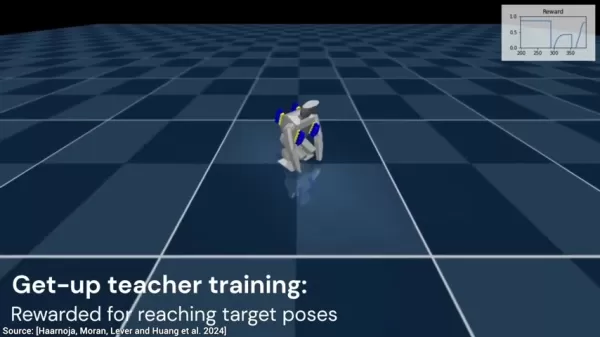
With twenty degrees of freedom, AI robots have 20 controllable joints, enabling them to respond appropriately to their soccer environment. This allows them to maintain balance and move strategically on the field.
Joint Movement Head pan Tilting left to right Head Tilt Tilting forward and back Ankle Roll Rotational movement Elbow Side to Side Knee Moving Joint
How to Use Lambda GPU Clouds
Launching a Lambda Instance
To harness the power of Lambda's GPU cloud for AI training and development, follow these steps:
- Sign Up for a Lambda Account: Visit the Lambda website and create an account by providing the necessary information.
- Access the Lambda Cloud Console: Log in to the Lambda Cloud console using your credentials to manage GPU instances.
- Select a GPU Instance Type: Choose from available GPU instance types, such as the NVIDIA GH200 Grace Hopper Superchip or H100, based on your AI workload needs.
- Configure Your Instance: Specify the desired configuration, including the operating system, storage, and any additional software packages.
- Launch the Instance: After configuring, launch your instance. Lambda will provision the resources, making it available for use.
- Access Your Instance: Connect to your instance using SSH or other remote access tools to deploy AI models and run training workloads. A one-click Jupyter option is available for machine learning.
Lambda GPU Cloud Pricing
Cost-Effective AI Compute
Lambda offers competitive pricing for its GPU cloud instances, making it an attractive option for cost-effective AI compute solutions.
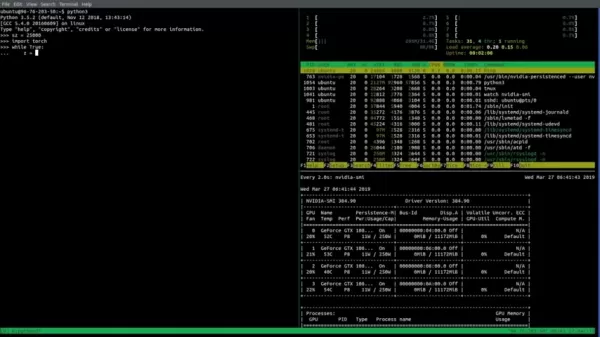
With Lambda's on-demand instances, you only pay for the resources you use, allowing easy scaling of compute capacity. Lambda's straightforward pricing model requires no long-term commitments or complex negotiations. They also provide access to on-demand H100 instances with persistent storage, ensuring all work is saved and available.
AI Soccer Robots: Weighing the Benefits and Drawbacks
Pros
- Promotes AI and robotics development.
- Has strong commercial applications.
- Enhances motor skills learning.
- Improves decision-making capabilities.
Cons
- Robots are prone to damage.
- Coding natural movements is challenging.
- Simulating real-world conditions is difficult.
- High risk of collisions.
Key Features of Lambda GPU Cloud
Unleashing the Power of AI with Lambda
Lambda's GPU cloud is designed to accelerate AI research and development, offering a range of features:
- NVIDIA GPUs: Access to a variety of NVIDIA GPUs, including the latest H100, A100, and A10 Tensor Core GPUs, to handle demanding AI workloads.
- Multi-GPU Instances: Multi-GPU instances for training and fine-tuning AI models across multiple GPUs, reducing training time.
- Lambda Cloud API: An easy-to-use Cloud API for launching, terminating, and restarting instances, enhancing developer experience.
Use Cases for Lambda GPU Cloud
Unlocking the Potential of AI Across Industries
Lambda's GPU cloud is suited for various AI applications, including:
- AI Training: Training and fine-tuning AI models for image recognition, natural language processing, and robotics.
- Scientific Computing: Performing computationally intensive simulations and data analysis for scientific research.
- Data Science: Accelerating data analysis tasks like data mining, machine learning, and statistical modeling.
FAQ
What is the significance of AI agents learning soccer through simulation?
Training AI agents in simulation offers a safe and efficient environment to learn complex motor skills and strategies before real-world application. This approach speeds up the learning process and minimizes the risk of damage to physical robots, optimizing the learning environment.
What are the key challenges in transferring skills from simulation to reality?
Transferring skills from simulation to reality involves overcoming differences between the two environments, such as imperfect sensors, motor limitations, and unpredictable conditions. Researchers must address these challenges to ensure effective performance in physical robots, using domain randomization during training to improve real-world transfer. Real-world testing is crucial for identifying and addressing limitations.
How do researchers balance aggression and safety in AI soccer robots?
Researchers balance aggression and safety by implementing penalties for overly aggressive behavior, encouraging AI agents to develop more strategic and controlled approaches. This promotes safe gameplay and prevents robot damage. By penalizing high impacts, the game becomes safer, helping robots avoid knee injuries and internal damage. Penalizing close encounters reinforces positive behaviors and encourages strategic AI, prioritizing safety first and strategy second.
How does the manufacturer’s programming compare to the AI movement skills?
The AI's movement skills generally outperform the manufacturer's original code, resulting in more agile and responsive movements.
Related Questions
What are the latest advancements in AI and robotics?
The fields of AI and robotics are continually evolving, with new breakthroughs emerging regularly. Recent advancements include:
- Advanced Robotics: Robots with greater dexterity, mobility, and adaptability are being developed, capable of performing complex tasks in various environments, from manufacturing to surgery, leading to lower production costs.
- Human-Robot Collaboration: Systems that allow humans and robots to collaborate effectively are being developed, with robots understanding human instructions and working safely alongside humans, enhancing collaboration and productivity.
- AI-Driven Automation: AI is increasingly used to automate complex and unstructured tasks, including customer service, fraud detection, and medical diagnosis.
- Edge Computing: AI models deployed at the network's edge reduce latency, improve privacy, and enable new applications in autonomous driving and industrial automation, providing real-time insights.
In essence, AI and robotics are transforming our world, offering new opportunities for innovation and growth. As these technologies continue to evolve, we can expect even more remarkable advancements in the future. With AI already playing soccer, what will they do next?
Related article
 AI Evaluation Requires Real-World Performance Review Beyond Benchmarks
If you've been tracking AI advancements, you've undoubtedly encountered headlines announcing record-breaking benchmark performances. From computer vision tasks to medical diagnostics, these standardized tests have long served as the definitive measur
AI Evaluation Requires Real-World Performance Review Beyond Benchmarks
If you've been tracking AI advancements, you've undoubtedly encountered headlines announcing record-breaking benchmark performances. From computer vision tasks to medical diagnostics, these standardized tests have long served as the definitive measur
 Atheist and Believer AI Clash Over Moral Argument in Heated Debate
When artificial intelligence systems with diametrically opposed philosophical frameworks engage in ethical debate, what insights emerge? This groundbreaking experiment staged an intellectual confrontation between an Atheist AI and Believer AI, focusi
Atheist and Believer AI Clash Over Moral Argument in Heated Debate
When artificial intelligence systems with diametrically opposed philosophical frameworks engage in ethical debate, what insights emerge? This groundbreaking experiment staged an intellectual confrontation between an Atheist AI and Believer AI, focusi
 OpenAI Upgrades ChatGPT Pro to o3, Boosting Value of $200 Monthly Subscription
This week witnessed significant AI developments from tech giants including Microsoft, Google, and Anthropic. OpenAI concludes the flurry of announcements with its own groundbreaking updates - extending beyond its high-profile $6.5 billion acquisition
Comments (2)
0/200
OpenAI Upgrades ChatGPT Pro to o3, Boosting Value of $200 Monthly Subscription
This week witnessed significant AI developments from tech giants including Microsoft, Google, and Anthropic. OpenAI concludes the flurry of announcements with its own groundbreaking updates - extending beyond its high-profile $6.5 billion acquisition
Comments (2)
0/200
![AnthonyScott]() AnthonyScott
AnthonyScott
 August 12, 2025 at 2:50:10 AM EDT
August 12, 2025 at 2:50:10 AM EDT
It's wild how AI robots are now kicking soccer balls like pros! The simulation-to-reality jump is mind-blowing. Makes me wonder if they'll outplay humans soon. ⚽🤖


 0
0
![OliviaJones]() OliviaJones
OliviaJones
 August 11, 2025 at 6:01:03 PM EDT
August 11, 2025 at 6:01:03 PM EDT
It's wild how AI robots are now kicking soccer balls! The simulation-to-reality jump is super cool, but I wonder if they’ll ever outplay Messi. ⚽


 0
0
The world of artificial intelligence and robotics is constantly advancing, and one particularly intriguing development is the creation of AI agents trained to play soccer. These AI-driven robots learn the game through simulations and then apply their skills in real-world scenarios, facing unique challenges and achieving notable successes. This exploration into AI soccer robots showcases how these technologies are pushing the limits of what AI and robotics can achieve, setting the stage for future breakthroughs.
Key Points
- AI agents learn to play soccer in simulated environments.
- Simulations can be accelerated, speeding up the learning process.
- Transferring skills from simulation to real-world scenarios is challenging.
- Robots are trained to prevent collisions and knee injuries.
- They develop skills like walking, turning, and kicking.
- AI-learned behaviors can outperform traditional handcrafted methods.
- Various AI techniques are used for different movements, such as walking, rising, and kicking.
- Lambda offers cost-effective cloud GPUs for AI applications.
The Evolution of AI Soccer Players
From Simulation to Reality: An AI Soccer Revolution
The journey of AI agents learning soccer begins in simulated environments. Initially, these agents are like beginners on the field, struggling to coordinate their movements and interact with the ball. Through extensive training, however, they gradually develop the necessary skills to become competent players. This process often involves reinforcement learning, where agents receive rewards for successful actions and penalties for failures. The goal is to develop AI capable of controlling robotic bodies to meet specific objectives in a dynamic, competitive environment. One major advantage of using simulations is the ability to speed up time.

With powerful computers, AI agents can experience years of simulated gameplay in a fraction of real-world time. This accelerated learning enables them to quickly refine their strategies and develop sophisticated skills that would take much longer to acquire through real-world practice alone. However, the real challenge lies in transferring these skills from simulation to reality. The real world introduces complexities and uncertainties not fully captured in simulation, such as imperfect sensors, motor limitations, and unpredictable environmental conditions. This requires the use of domain randomization during training to improve the transfer to real-world scenarios.
Challenges in Training AI Soccer Robots
Creating AI soccer robots comes with its own set of challenges. One major concern is the potential for damage during gameplay. In the early stages, without proper programming, robots might engage in behaviors leading to collisions and mechanical failures, particularly knee injuries.

To mitigate these risks, researchers implement strategies like collision avoidance mechanisms and motion restrictions. The complexity of controlling robots with multiple degrees of freedom adds another layer of difficulty, as each joint represents a potential point of failure, requiring precise coordination for smooth and efficient movements. Additionally, the transition from simulation to reality necessitates careful consideration of the differences between these environments.
Balancing Aggression and Safety in AI Soccer
In the competitive world of soccer, aggression is valued, but when it comes to physical robots, striking a balance between aggressive play and safety is crucial.

In initial simulations, AI agents may learn overly aggressive tactics, potentially leading to collisions and damage. To address this, researchers impose penalties for such behavior, encouraging the development of more strategic and controlled approaches. By penalizing high impacts, the game becomes safer, helping robots avoid knee injuries and damage to internal mechanisms. This strategic training reinforces positive behaviors and promotes safe gameplay.
Beyond the Game: The Broader Impact of AI Soccer Research
While AI soccer robots might seem like a niche area, their development has broader implications for AI and robotics.

The challenges faced in creating these robots, such as learning complex motor skills and transferring them to the real world, are relevant to many other applications. Techniques developed for AI soccer robots could enhance the performance of robots in manufacturing, logistics, or healthcare. Additionally, studying these AI agents' strategies and techniques can provide valuable insights into human learning and complex task performance, advancing our understanding of motor control and decision-making. Essentially, AI soccer research is about pushing forward the field of AI and robotics, paving the way for more effective human-machine collaboration.
Key Components and Features of the AI Soccer System
Training Regimen for Optimal Performance
To train AI soccer robots effectively, a structured approach is essential.

The training regimen typically involves several stages, starting with basic motor skills and progressing to more complex tactical maneuvers. Initially, robots learn to stand, walk, and rise after falling before engaging in soccer-specific training.
- Motor Skill Acquisition: Robots first master fundamental motor skills like walking, turning, and kicking, focusing on precise control over joints and limbs for accurate and efficient movements.
- Tactical Maneuvers: After acquiring basic motor skills, robots learn more complex tactical maneuvers, such as passing, shooting, and defending, requiring coordination and strategic decision-making.
- Game-Level Strategies: Finally, robots develop game-level strategies, including effective positioning, anticipating opponents' moves, and exploiting defensive weaknesses, integrating motor skills and tactical maneuvers into a cohesive gameplay strategy.
Degrees of Freedom
Degrees of freedom are crucial for the agility and responsiveness of AI soccer robots.

With twenty degrees of freedom, AI robots have 20 controllable joints, enabling them to respond appropriately to their soccer environment. This allows them to maintain balance and move strategically on the field.
| Joint | Movement |
|---|---|
| Head pan | Tilting left to right |
| Head Tilt | Tilting forward and back |
| Ankle Roll | Rotational movement |
| Elbow | Side to Side |
| Knee | Moving Joint |
How to Use Lambda GPU Clouds
Launching a Lambda Instance
To harness the power of Lambda's GPU cloud for AI training and development, follow these steps:
- Sign Up for a Lambda Account: Visit the Lambda website and create an account by providing the necessary information.
- Access the Lambda Cloud Console: Log in to the Lambda Cloud console using your credentials to manage GPU instances.
- Select a GPU Instance Type: Choose from available GPU instance types, such as the NVIDIA GH200 Grace Hopper Superchip or H100, based on your AI workload needs.
- Configure Your Instance: Specify the desired configuration, including the operating system, storage, and any additional software packages.
- Launch the Instance: After configuring, launch your instance. Lambda will provision the resources, making it available for use.
- Access Your Instance: Connect to your instance using SSH or other remote access tools to deploy AI models and run training workloads. A one-click Jupyter option is available for machine learning.
Lambda GPU Cloud Pricing
Cost-Effective AI Compute
Lambda offers competitive pricing for its GPU cloud instances, making it an attractive option for cost-effective AI compute solutions.

With Lambda's on-demand instances, you only pay for the resources you use, allowing easy scaling of compute capacity. Lambda's straightforward pricing model requires no long-term commitments or complex negotiations. They also provide access to on-demand H100 instances with persistent storage, ensuring all work is saved and available.
AI Soccer Robots: Weighing the Benefits and Drawbacks
Pros
- Promotes AI and robotics development.
- Has strong commercial applications.
- Enhances motor skills learning.
- Improves decision-making capabilities.
Cons
- Robots are prone to damage.
- Coding natural movements is challenging.
- Simulating real-world conditions is difficult.
- High risk of collisions.
Key Features of Lambda GPU Cloud
Unleashing the Power of AI with Lambda
Lambda's GPU cloud is designed to accelerate AI research and development, offering a range of features:
- NVIDIA GPUs: Access to a variety of NVIDIA GPUs, including the latest H100, A100, and A10 Tensor Core GPUs, to handle demanding AI workloads.
- Multi-GPU Instances: Multi-GPU instances for training and fine-tuning AI models across multiple GPUs, reducing training time.
- Lambda Cloud API: An easy-to-use Cloud API for launching, terminating, and restarting instances, enhancing developer experience.
Use Cases for Lambda GPU Cloud
Unlocking the Potential of AI Across Industries
Lambda's GPU cloud is suited for various AI applications, including:
- AI Training: Training and fine-tuning AI models for image recognition, natural language processing, and robotics.
- Scientific Computing: Performing computationally intensive simulations and data analysis for scientific research.
- Data Science: Accelerating data analysis tasks like data mining, machine learning, and statistical modeling.
FAQ
What is the significance of AI agents learning soccer through simulation?
Training AI agents in simulation offers a safe and efficient environment to learn complex motor skills and strategies before real-world application. This approach speeds up the learning process and minimizes the risk of damage to physical robots, optimizing the learning environment.
What are the key challenges in transferring skills from simulation to reality?
Transferring skills from simulation to reality involves overcoming differences between the two environments, such as imperfect sensors, motor limitations, and unpredictable conditions. Researchers must address these challenges to ensure effective performance in physical robots, using domain randomization during training to improve real-world transfer. Real-world testing is crucial for identifying and addressing limitations.
How do researchers balance aggression and safety in AI soccer robots?
Researchers balance aggression and safety by implementing penalties for overly aggressive behavior, encouraging AI agents to develop more strategic and controlled approaches. This promotes safe gameplay and prevents robot damage. By penalizing high impacts, the game becomes safer, helping robots avoid knee injuries and internal damage. Penalizing close encounters reinforces positive behaviors and encourages strategic AI, prioritizing safety first and strategy second.
How does the manufacturer’s programming compare to the AI movement skills?
The AI's movement skills generally outperform the manufacturer's original code, resulting in more agile and responsive movements.
Related Questions
What are the latest advancements in AI and robotics?
The fields of AI and robotics are continually evolving, with new breakthroughs emerging regularly. Recent advancements include:
- Advanced Robotics: Robots with greater dexterity, mobility, and adaptability are being developed, capable of performing complex tasks in various environments, from manufacturing to surgery, leading to lower production costs.
- Human-Robot Collaboration: Systems that allow humans and robots to collaborate effectively are being developed, with robots understanding human instructions and working safely alongside humans, enhancing collaboration and productivity.
- AI-Driven Automation: AI is increasingly used to automate complex and unstructured tasks, including customer service, fraud detection, and medical diagnosis.
- Edge Computing: AI models deployed at the network's edge reduce latency, improve privacy, and enable new applications in autonomous driving and industrial automation, providing real-time insights.
In essence, AI and robotics are transforming our world, offering new opportunities for innovation and growth. As these technologies continue to evolve, we can expect even more remarkable advancements in the future. With AI already playing soccer, what will they do next?
 Atheist and Believer AI Clash Over Moral Argument in Heated Debate
When artificial intelligence systems with diametrically opposed philosophical frameworks engage in ethical debate, what insights emerge? This groundbreaking experiment staged an intellectual confrontation between an Atheist AI and Believer AI, focusi
Atheist and Believer AI Clash Over Moral Argument in Heated Debate
When artificial intelligence systems with diametrically opposed philosophical frameworks engage in ethical debate, what insights emerge? This groundbreaking experiment staged an intellectual confrontation between an Atheist AI and Believer AI, focusi
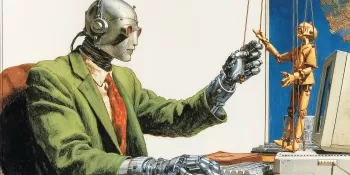 OpenAI Upgrades ChatGPT Pro to o3, Boosting Value of $200 Monthly Subscription
This week witnessed significant AI developments from tech giants including Microsoft, Google, and Anthropic. OpenAI concludes the flurry of announcements with its own groundbreaking updates - extending beyond its high-profile $6.5 billion acquisition
OpenAI Upgrades ChatGPT Pro to o3, Boosting Value of $200 Monthly Subscription
This week witnessed significant AI developments from tech giants including Microsoft, Google, and Anthropic. OpenAI concludes the flurry of announcements with its own groundbreaking updates - extending beyond its high-profile $6.5 billion acquisition
 August 12, 2025 at 2:50:10 AM EDT
August 12, 2025 at 2:50:10 AM EDT
It's wild how AI robots are now kicking soccer balls like pros! The simulation-to-reality jump is mind-blowing. Makes me wonder if they'll outplay humans soon. ⚽🤖


 0
0
 August 11, 2025 at 6:01:03 PM EDT
August 11, 2025 at 6:01:03 PM EDT
It's wild how AI robots are now kicking soccer balls! The simulation-to-reality jump is super cool, but I wonder if they’ll ever outplay Messi. ⚽


 0
0





























